Navy SEALS: Unknown Facts and the Crazy Things They Do

While TV shows like Hawaii Five-O make the skills of a Navy SEAL seem effortless — Lieutenant Commander Steve McGarrett does look darn good pulling off some unbelievable stunts — the reality is that being a Navy SEAL requires bravery that borders on crazy. Fortunately, a few of the best American soldiers are up to the challenge.
The training itself is intense and deadly, and the job only gets more dangerous and more challenging from there. Navy SEALs are the most elite members of the military because they have to be the best to survive.
The Speech That Started It All
It was President John F. Kennedy who started the Navy SEALs. On May 15, 1961, he gave a speech to Congress that changed military operations forever. As a Navy veteran himself, he knew that given the right resources, the military could put together an elite group of soldiers to conduct special missions.

A year later, two SEAL teams were created, and the number of special teams has grown ever since. It was the beginning of a new era of military combat and the start of decades of special missions for Navy SEALs.
No Women Until 2016
For the longest time, women weren’t allowed to train to be Navy SEALs. The restriction was never meant to be discriminatory — it was simply practical. Initially, it wasn’t possible to accommodate the different needs of women in terms of housing and operations.

The ban was officially lifted in 2016, but there still haven’t been any female Navy SEALs. One woman started the training in 2017, but she dropped out after just one week. One day, the U.S. may pay tribute to the first female Navy SEAL, but that day hasn’t arrived yet.
A.K.A. The Budweiser
Officially called the “Special Warfare Insignia,” a special gold symbol is worn on the Navy SEAL uniform. The name comes from the specialized training that the trainees have to endure. It used to come in two colors — gold and silver — to distinguish different rankings for officers and enlisted personnel.
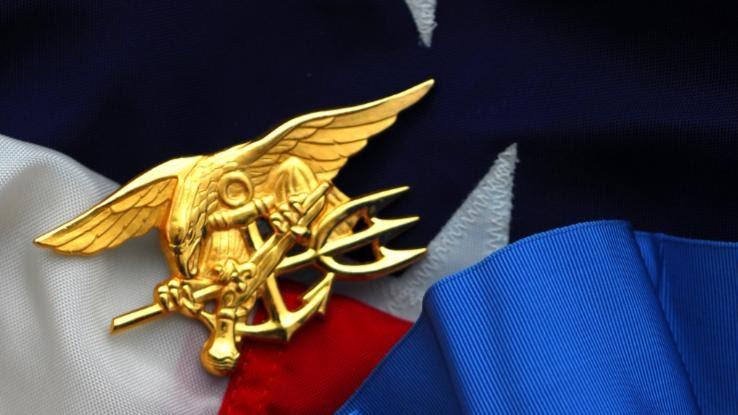
Because the training is the same for both rankings, the insignias are now only gold. The symbol is an eagle with one claw holding a trident/anchor and the other holding a gun. The symbol looks similar to the Anheuser-Busch logo for Budweiser beer, so the emblem earned the nickname “The Budweiser.”
Not Just Water Missions
Although most people think of water-related missions when they think of Navy SEALs, these special troops actually have all types of missions. The term SEAL stands for sea, air and land. Missions in the air are sometimes HALOs (High Altitude-Low Opening jumps).
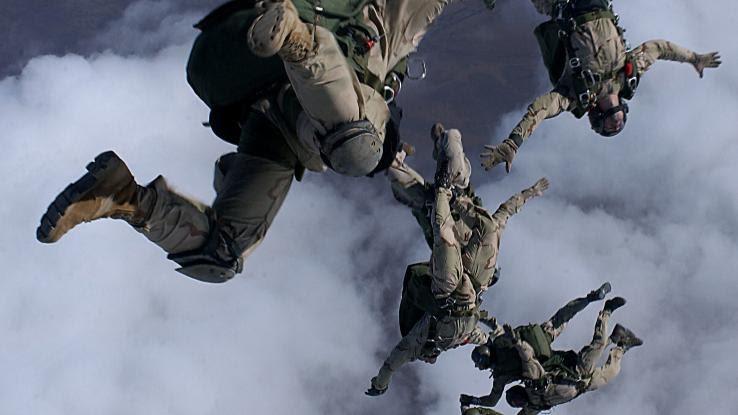
This includes jumping out of a plane at 25,000 feet in the air — sometimes even higher. They “fly” through the air until they are only 500 feet from the ground and then pull their parachutes. Some jumps start as high as 20 miles before they touch back down on the ground.
Extremely High Failure Rate
The objective of the training to become a Navy SEAL is to find the absolute best candidates. These special teams carry great responsibility on their shoulders, and it requires stellar people to fill the role. For that reason, the training weeds out a whopping 80% of trainees in the very first stages of testing.

Not everyone can get past the physical challenges on land and in the water, particularly on minimal amounts of sleep. Only 20% of trainees continue beyond the first stages of the training process. These early stages consist of fundamental physical tests, and the training gets more intense with every new phase.
Training for Public Viewing
Nearly everything about Navy SEALs is top secret. They can’t tell you what they do, where they go, what they do or anything at all about their work life. Considering all the secrecy, it’s surprising that one part of becoming a Navy SEAL can be viewed by the public.

If you go to Imperial Beach in Coronado, California, at the right time, you can see new recruits going through training. The soldiers gear up to haul logs, operate inflatable boats and practice landing maneuvers.
Training with Waterboarding
Waterboarding used to be a part of the training process for Navy SEALs. This terrifying test is used to simulate the feeling of drowning. For SEALs, it was supposed to be about building endurance, but the technique was very controversial because it’s also used by terrorists as a torture method to get information.

The test was so brutal that practically no one passed it, causing those who failed it to lose confidence. It was finally eliminated from training practices. Some CIA members who have experienced the test claim that the longest someone ever lasted was 14 seconds.
Psychological Training Tactics
In order to endure such violence and horror, SEALs have to train their minds to process fear in a manageable way. They have to remain calm in the worst of situations if they are going to be effective teammates, keep each other safe and complete their missions.

For ordinary civilians, fear is what protects us from harm. It tells us when a situation is dangerous, and we need to get out of it. While this is helpful for ordinary people, it’s not the right reaction for Navy SEALs. They must train themselves to endure immense fear and continue to think and fight properly.
Physical Testing
In order to start the training to become a SEAL, a candidate first has to pass a series of physical tests. First, he must complete a 500-yard swim in less than 12:30. Then, he must complete 50 push-ups in two minutes and 50 sit-ups in two minutes. Next comes 10 consecutive pull-ups in two minutes. Finally, he needs to run 1.5 miles in less than 10:30.
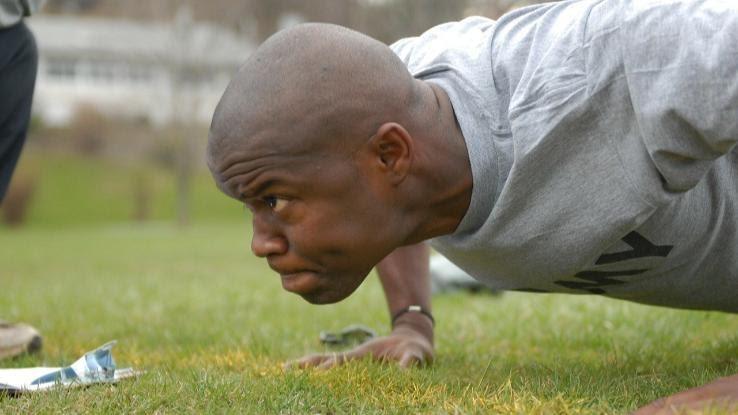
If candidates manage to pass all the tests, then they are approved for Navy SEAL training. However, if these tasks are challenging, they should know it only gets harder from there.
Prep School
After going through prep school — the name for the first section of Navy SEAL training — the trainees are faced with a grueling final test. The first part tests their swimming abilities, and they have to swim 1,000 meters with fins on in less than 20 minutes.

They also have to run 4 miles in boots and pants in less than 31 minutes. Fitness tests are administered with push-ups, sit-ups and pull-ups. Anyone who doesn’t pass this test is eliminated from the rest of the SEAL team training and is assigned to a different Navy operation.
BUD/S
Known as BUD/S, Basic Underwater Demolition/SEAL training is the next step in becoming a SEAL. This brutal 24-week course physically trains the soldiers while teaching them about tactics, strategy and other techniques.
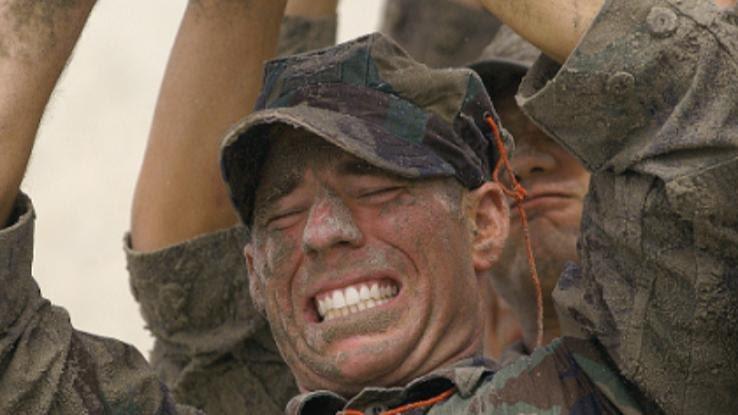
While they are learning all this, they are also being pushed to the ends of their physical limits. They carry telephone poles in teams as well as endure crazy ocean water conditioning. If a trainee makes it through the whole BUD/S program, then they have the ability to go on to SEAL Qualification Training, or SQT.
Underwater Training
SEAL members must be prepared to endure any sticky situation that could present itself while on a water mission. As part of their training, they are taught how to swim with both their legs and arms tied up. In order to prove they have learned the skill correctly, they have to float for five minutes while tied up.

Also, to be an effective Navy SEAL, they must be able to hold their breath underwater for an extended period of time. The final test to graduate BUD/S is holding their breath for two full minutes.
Hell Week
The final part of phase one of the BUD/S training program is what is known as “Hell Week.” This is a very accurate description of the five-day ordeal. The trainees are put through almost endless physical tasks and are only allowed a total of four hours of sleep.

The physical tasks include running that cumulatively adds up to 200 miles — that’s like running from New York to Boston. There are also academic tests for the trainees to complete to see how well they are able to think while being progressively physically exhausted.
BUD/S Phase Two: Combat Diving
During part two of BUD/S, trainees are taught to deal with even more stressful water-based situations. They have to endure a very long 2-mile swim, and they have to deal with random “attacks” from their training officers designed to mimic real possible dangers in the water.
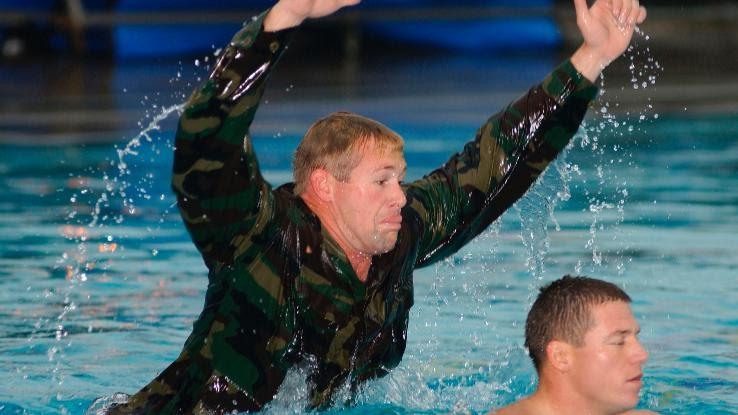
Despite the name, the training also includes other water-centered skills. For example, they also learn how to deal with drowning victims who either are panicking or not cooperating with them. This is important because what starts out as a rescue can suddenly turn into a multiple casualty accident without proper training.
BUD/S Phase Three: Land Warfare
The next and final phase of BUD/S teaches trainees how to conduct combat on land. They learn all about rappelling, weapons handling and demolitions. After that training is complete, they are put to the test in a real-life simulation.
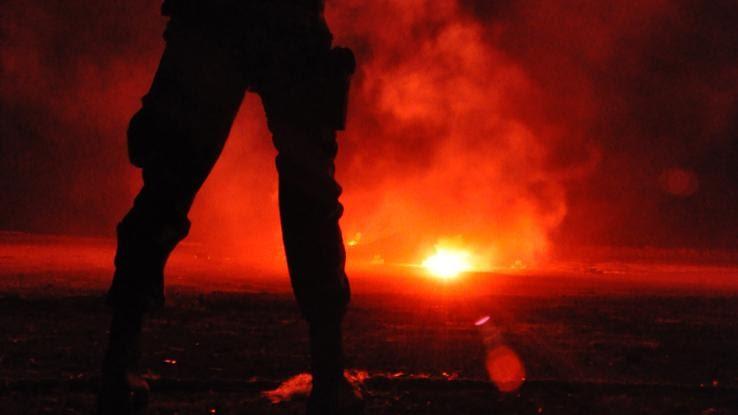
The trainees are sent to Clemente island — just off the coast of California — to complete live drills. The environment is meant to simulate real combat scenarios. This is the deadliest part of training, as the explosives are real, and the lack of sleep can lead to deadly consequences.
Parachute Training
The final piece of the SEAL puzzle is air combat. Trainees must learn how to operate missions that start in the air. For air mission training, they are led through a series of airplane jumps that become more and more intense.

This training goes on for three weeks before a final test that consists of jumping from a plane in full combat equipment in pitch-black darkness. The jump is from an altitude of 9,500 feet. This test has led to the highest number of accidental training deaths for the SEAL program.
Final Course and Training
At this point, only 10% of the original recruits are left, and those who made it still have one last 26-week course to complete before they receive their own training for specific missions. This 26-week course is known as SEAL Qualification Training, or SQT.
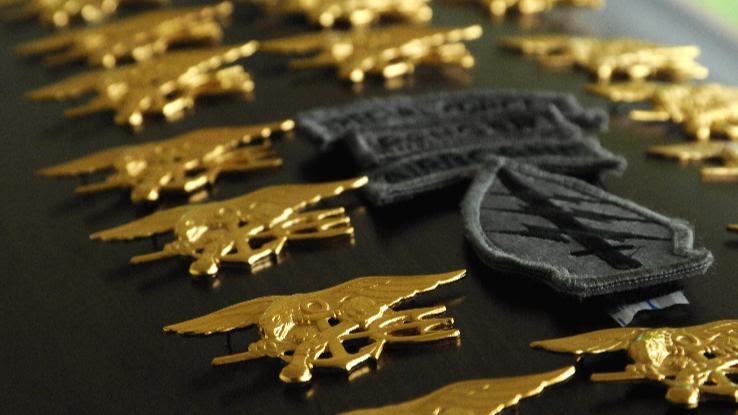
After the final course, they are admitted to a platoon and are officially SEALs. However, the training is never really over, as they train before every single mission they go on. However, the learning curve is a little less steep from this point on, and they can officially call themselves Navy SEALs.
More Deaths in Training Than in Combat
Being a Navy SEAL is obviously a very dangerous job, but it’s statistically more dangerous to go through the training process than to go on a deadly mission. In the last three years, more soldiers have died during training than from being in the field.

This statistic isn’t meant to point fingers at anyone. It simply helps you truly understand just how serious and dangerous it is to train to be one of the best combat military operatives. It’s a serious pursuit that should only be attempted by those who are mentally and physically in prime condition and prepared for the tasks.
Full-Scale Practice Simulation
The mission that SEAL Team Six is best known for is the killing of Osama bin Laden. The mission was called “Operation Neptune Spear.” In order to prepare for it, they built a full-scale replica of the compound where Osama bin Laden was hiding.

Then, they ran the mission over and over again until it was perfect. This mission was extremely important in the war on terrorism, and there was absolutely no room for error. When it was time to complete the real raid on the compound, the target was eliminated, and the mission was a success.
More Than 2.5 Years of Training
In its entirety, SEAL training can take up to two and a half years. It’s a serious commitment to train to become a Navy SEAL, but it’s not just about the time spent in training. It’s about being able to handle the physical and emotional brutality that comes with the job.
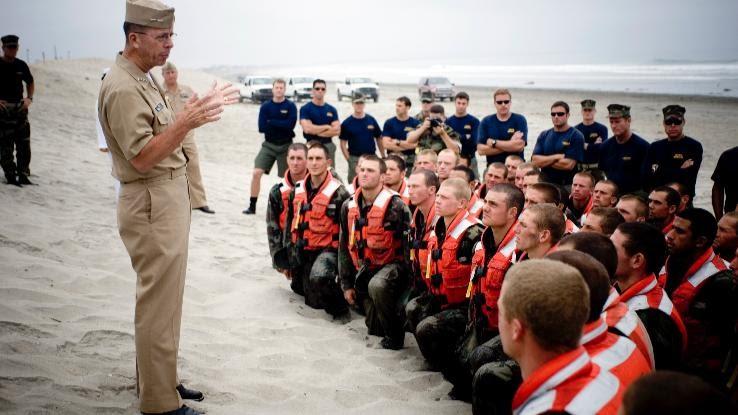
Not to mention, grave danger follows these brave soldiers wherever they go — sometimes into civilian life. It’s truly a remarkable thing for someone to submit themselves to this kind of commitment. That is why the Navy SEALs are among the most elite military members.
SEAL Team Six and a Name to Deceive
At the time of its most renowned mission, there were only three SEAL teams, but the leader of SEAL Team Six, Richard Marcinko, named it number six because he wanted the Russians to think there were more than just three teams. There was also a bit of controversy surrounding the way Marcinko found funds to support the team.

He ended up getting caught and was sent to federal prison for defrauding the government. Now, what he did was illegal, but it could be argued that it was for the greater good. Had he not done it, the SEALs might not have been so successful on their critical mission.
SEAL/CIA: The Omega Program
SEAL Team Six wasn’t recognized by the government, as it was supposed to be a secret group. Regardless, it’s no secret that during the wars in Afghanistan and Iraq, SEAL Team Six participated in tasks that combined being a soldier with being a spy.

The collaboration between SEAL Team Six and the CIA led to suspicious missions that sometimes resulted in unnecessary civilian casualties. It’s unclear what the rules were for such an operation, but they have taken criticism for taking such drastic measures in order to complete missions.
Dangerous Expansion
SEAL Team Six saw a giant increase in funding that has resulted in a huge expansion — and by huge, we mean more than 1,800 people! While this might initially sound like a good thing because more people means more work gets done, but many fear that such an expansion has led to the group having too much freedom.

After all, in the last 14 years, Seal Team Six has experienced more deaths than any other team. Perhaps the team has expanded so much that they are no longer the elite group they were intended to be?
SEAL Team Six Weapons
One of the weapons used by SEAL teams is the Russian-made AK-47. It’s known to be reliable in almost every situation, which is critical for use in combat. SEALs have also used a new customized German-made rifle, and they put suppressors on their guns in order to make them quieter and less noticeable when they are fired.
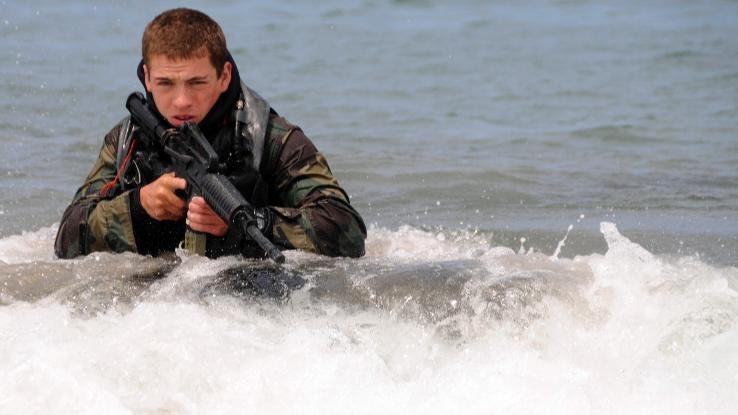
To complete nighttime missions, they created laser sights for shooting accuracy and are now issuing thermal detectors that sense body heat. They also now have new grenades that are capable of demolishing entire buildings.
Other Special Military Teams
There are eight SEAL teams in total that are numbered one to 10 and split into two groups. Group one has the odd numbers and group two has the even numbers. Navy SEALs are probably the most well-known special operatives in the military, but they aren’t the only military specialists.

The Air Force has Delta Force, the Marines have MARSOC and RECON and the Army has Green Berets, Army Rangers and Night Stalkers. These other special forces aren’t as publicized, but they are just as important as Navy SEALs in their work.
Michael A. Monsoor
A hero to his entire team, Michael A. Monsoor sacrificed his life in order to save his friends. His platoon was sent to Iraq to train Iraqi soldiers. While there, they were faced with frequent attacks from insurgents. One day, while on a rooftop with his fellow SEALs, an insurgent threw a live grenade at them.

He immediately dove on top of the live grenade and absorbed the entire explosion with his body, which protected his entire team from being taken out. He was posthumously awarded the Medal of Honor for his heroic actions.
American Sniper
One of the most well-known snipers is Chris Kyle. He earned the nickname “The Devil” among the Iraqi soldiers because of his 150 confirmed kills. He released an autobiography called American Sniper in 2012, and a movie was made based on the book.

The movie starred Bradley Cooper as Chris Kyle and told the story of his life as a sniper for the Navy SEALs. The movie did very well at the box office and even won critical acclaim and awards. Unfortunately, Chris Kyle was tragically shot by an unstable veteran with severe PTSD after he returned home from Iraq.
Killing Ratio in Vietnam
The central part of being a Navy SEAL is being really good at your job. The mental part of the job is even more difficult because almost all successful missions must be kept secret and aren’t publicized. However, one known success of the Navy SEALs is that during the Vietnam war, Seal Team One and Seal Team Two had a combined kill ratio of 200 to 1.
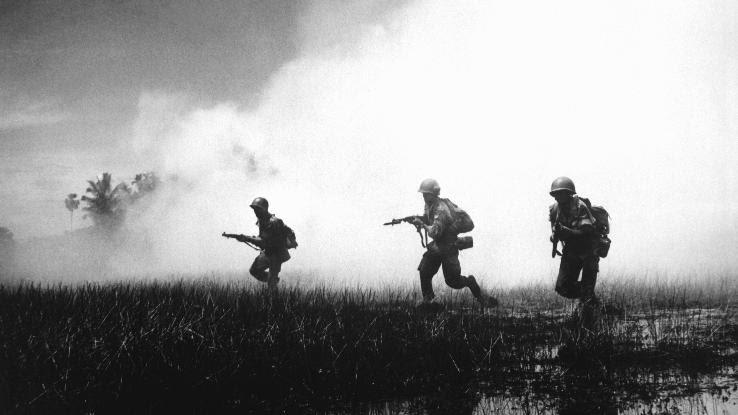
That means that only one Navy SEAL was killed for every 200 enemy deaths. In total, there were 46 Navy SEAL deaths in the war. That is far less than the 9,200 enemy combatants killed by the SEALs.
After 9/11
After 9/11, the number of SEALs skyrocketed. This tragic day led to an increase in the need for SEAL activity all over the world, and the Navy needed new members to fill the new roles. For example, SEAL Team Six only had 90 people before 9/11. After the terrorist attack, the roster had 300 people on the team.

Although there are 2,500 active Navy SEALs in total, that number is only 1% of the total number of people in the Navy altogether. It really is a group of only the most elite and skilled military soldiers.
Dog SEALs
Navy SEALs also have dog sidekicks that they use on missions. The favorite breed of dog for Navy SEALs is the Belgian Malinois also known as a War Dog. This breed of dog is very intelligent and perfect for the dangerous missions they go on with soldiers.

Just like the human Navy SEALs, they go through training. The dogs are trained to sniff out explosives and alert the team to various dangers they can hear, smell or otherwise sense. The dogs can also operate parachutes, and some can even jump out of planes by themselves!





